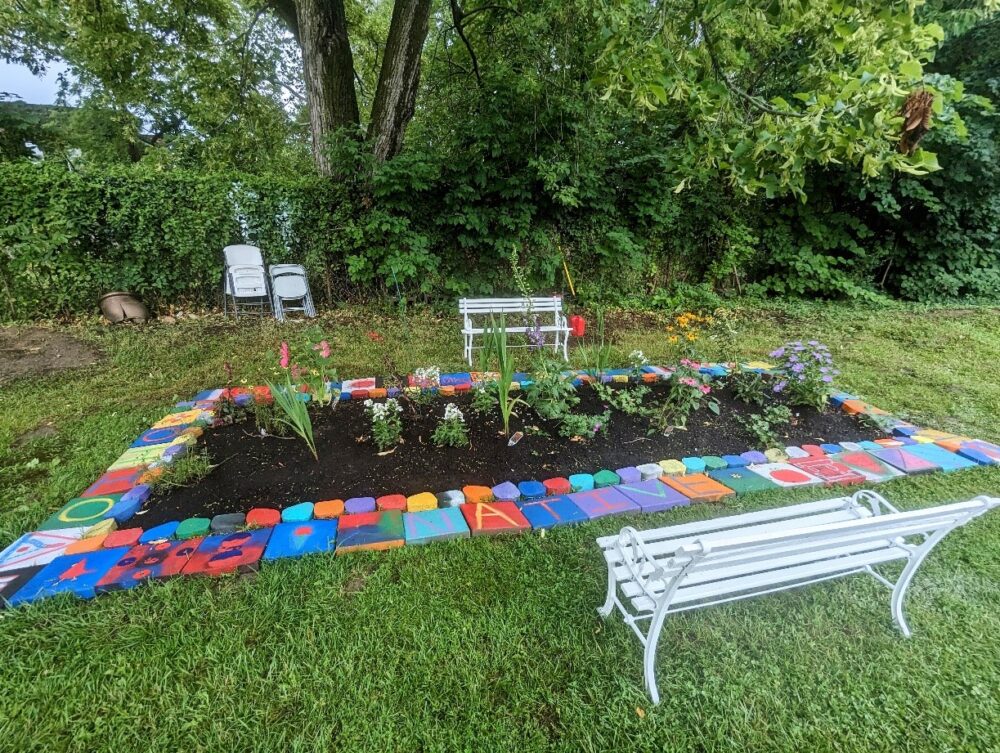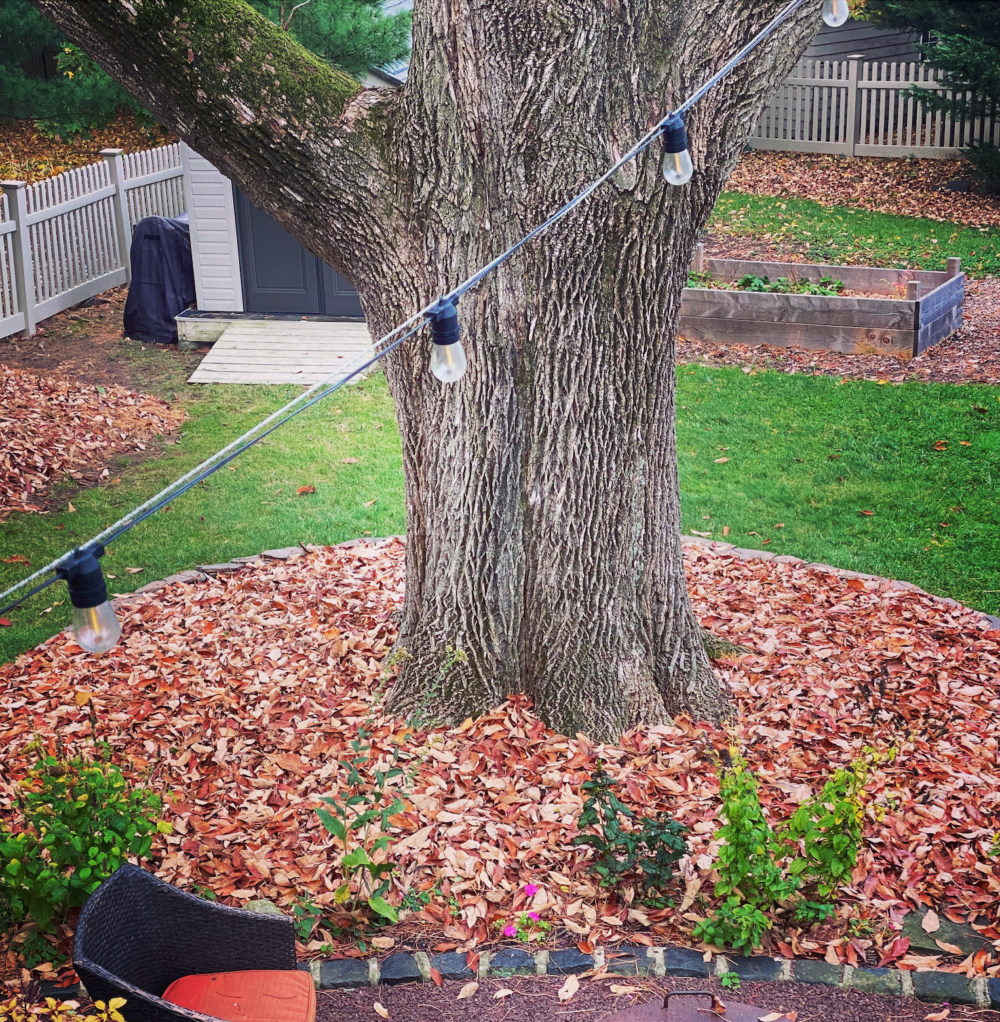We have much more to do and your continued support is needed now more than ever.
Top Five Cities That Garden for Wildlife

National Wildlife Federation’s Garden for Wildlife™ 50th year celebration recognizes cities with the highest wildlife gardening activity. These concentrations of Certified Wildlife Habitats® help connect fragmented habitat in highly developed areas in backyards, balconies, at schools, and across communities. These 5 cities are illustrative of the thousands of cities, towns, and states that contribute to 287,500 Certified Wildlife Habitats® nationwide, including over 10,000 Schoolyard Habitats as of May 2023.
Studies show why the volume of these habitat gardens is important
Scientific research undertaken in the last dozen years has shown that NWF certified habitats can boost wildlife numbers and perhaps even help reverse these disturbing (wildlife decline) trends. In a 2021 paper published in Ecological Applications, 15 scientists examined residential yard management, including NWF certified habitats, in six U.S. cities. They documented many more bird species in the certified habitats, including wood thrushes, gray catbirds and pileated woodpeckers. Conversely, noncertified yards with large lawns tended to attract mostly nonnatives such as house sparrows and European starlings. They conclude that “yards, especially those managed for wildlife, support diverse, heterogeneous bird communities with high public interest and potential to support species of conservation concern.” –In Full Bloom, National Wildlife Magazine, Spring 2023.
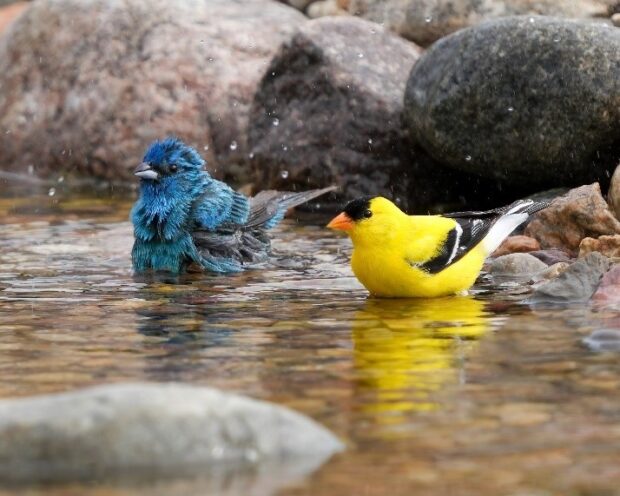
The top 5 cities were selected based on the total number of registered Certified Wildlife Habitats® per city. These are properties whose owners have committed to providing wildlife with food, water, cover, and places to raise young through sustainable gardening practices. Approximately 90% of these certifications are residential, with others at schools, campuses, places of worship, parks, and businesses.
National Wildlife Federation applauds these top cities and the thousands of wildlife gardeners for their creativity and passion. They represent approximately 7 million participants in the Garden for Wildlife native plant movement growing since 1973, and get us closer to our 50th anniversary goal of 300,000 Certified Wildlife Habitats® in 2023!
# 1 Austin, Texas
With 3,150 Certified Wildlife Habitats® in Austin, this city has more certifications than any other city in the nation! This number contributes to the full 4,736 Certified Wildlife Habitats® metro-wide, and 17,000 certifications statewide promoted by Garden for Wildlife Texas and the Texas Conservation Alliance.
Austin’s work to achieve top wildlife gardening status is essential to support iconic species like the monarch butterfly, the Texas state insect, by creating habitat along the monarch’s migratory journey. To help monarchs, bees, and birds, wildlife gardeners plant Texas natives like green antelope horn milkweed (Asclepias viridis), orange butterfly milkweed (Asclepias tuberosa), blue lupine (Lupinus texensis), drought tolerant agave (Agave americana), and shrubs and grasses native to Central Texas and its hill country.
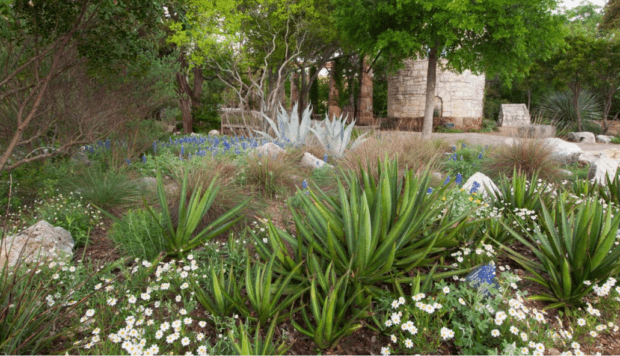
A key factor in Austin’s success is the network of Community Wildlife Habitats throughout the Austin metro area, led by passionate teams of wildlife gardeners that engage neighbors and friends in creating and certifying habitat gardens. The city of Austin became a Community Wildlife Habitat in 2009 and continues to promote wildlife habitats through Wildlife Austin. Whitewater Springs, Wells Branch, and Sunset Valley have other active Community Wildlife Habitat teams contributing to overall metro-wide success. National Wildlife Federation’s South-Central regional office recruits hundreds of additional wildlife gardeners through its Monarch Stewards and Monarch Heroes programs.
Wildlife gardeners of all ages participate in this community, with 206 of these certifications designated as Schoolyard Habitats. School district promotion through NWF’s Eco-Schools program and the creation of Schoolyard Habitats help monarch butterflies using NWF’s Monarch Mission curriculum.
Austin achieved Mayors’ Monarch Pledge Leadership status in 2022, contributing additional pollinator and monarch habitat gardens. Habitat certifications continue to grow with the help of NWF partner Taylor Morrison, a national homebuilder committed to enhancing biodiversity and restoring wildlife habitat by planting native plants and supporting monarchs across 19 Austin communities.
The Lady Bird Johnson Wildflower Center, the Botanic Garden of Texas, is a notable Austin Certified Wildlife Habitat® with inspiring gardens open to the public. The work of this garden is an example of the native habitat efforts found at approximately 200 public garden Certified Wildlife Habitats® nationwide.
National Wildlife Federation applauds wildlife gardeners across central Texas who are playing a key role in supporting declining wildlife species, like the monarch and the golden cheeked warbler, listed as endangered in 1990. Austin’s City Council has helped encourage wildlife gardening with these important resolutions:
- Monarch Habitat and Milkweed Resolution 20150514-004
- Affirmative Defense for Native Tall Grasses Resolution 20110804-024
#2 Charlotte, North Carolina
Charlotte, with 1,561 certifications, is a natural result of its network of Charlotte Wildlife Stewards, a chapter of the North Carolina Wildlife Federation (NCWF), which succeeded in making the city an NWF Community Wildlife Habitat in 2015. An additional 6 other Community Wildlife Habitats in neighborhoods including Lake Norman, Concord, Matthews, and Marvin helped the Charlotte metro area reach 4,843 certifications in total. Stonehaven is very close to meeting their Community Wildlife Habitat requirements, and Sun City contributes where the Charlotte metro area overlaps South Carolina. 167 Schoolyard Habitats engage youth and educators in providing wildlife habitat in Charlotte.
Charlotte’s certifications are essential in supporting the native flora and fauna of the Piedmont ecoregion, such as the Carolina wren and Eastern box turtle. Understory shrubs and trees, like Carolina Allspice (Calycanthus floridus), Eastern redbud (Cercis canadensis), Carolina Rose (Rosa carolina), and Sweet Azalea (Rhododendron arborescens), are often local wildlife gardeners’ native favorites. Flowering perennial favorites in this city can include Swamp or Red Milkweed (Asclepias incarnata), Wild Columbine (Aquilegia canadensis), and Carolina Phlox (Phlox carolina).
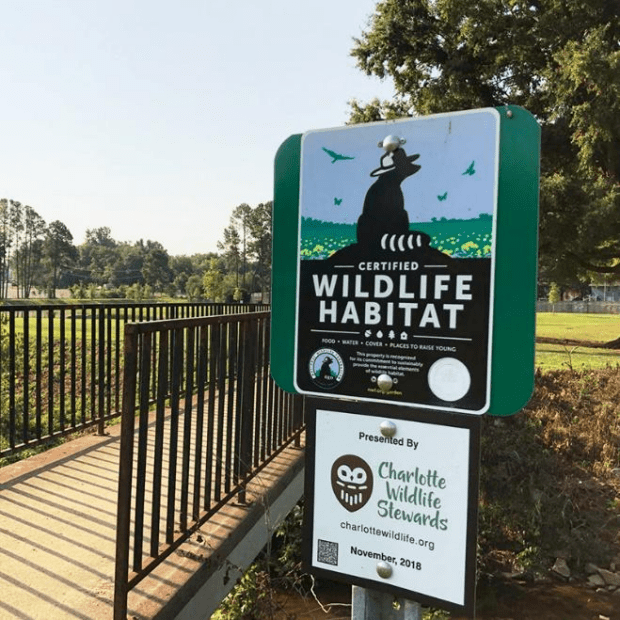
Charlotte recently became a Mayors’ Monarch Pledge city, promoting wildlife-friendly gardening by planting milkweed and pollinator-friendly native nectar plants in medians, public rights-of-way, and other prominent or culturally significant community locations. Greater Charlotte communities of Concord, Matthews, and Gastonia are also Mayors’ Monarch Pledge signatories, and 24 communities across Charlotte are promoting certifications and sustainable landscapes as part of NWF’s partnership with homebuilder Taylor Morrison.
A notable Charlotte Certified Wildlife Habitat® is S.E.E.D/Children’s Garden at Winghaven, a public garden with 100% native plants offering activity centers for budding naturalists to explore and participate in educational programs and events.
Charlotte contributes to over 14,000 Certified Wildlife Habitats statewide promoted by North Carolina Wildlife Federation. NCWF is also an advocate of the Native Plants Act, a crucial bill for the health, natural identity, and culture of North Carolina’s wildlife and habitat. NCWF provides programs such as The Butterfly Highway, an initiative that aims to restore native pollinator habitats to areas impacted by urbanization.
Charlotte Wildlife Stewards inspire new wildlife gardeners on land and in the water! They are hosting Wild on the Water on June 3rd – a paddle where naturalists teach about local plant and wildlife species.
#3 Indianapolis, Indiana
Wildlife gardeners in the city of Indianapolis have contributed 1,433 Certified Wildlife Habitats® (including 138 Schoolyard Habitats) to the 3,445 certifications metro-wide. These sites connect critical habitat for wildlife across Indianapolis and provide pitstops for migratory wildlife traveling through the region.
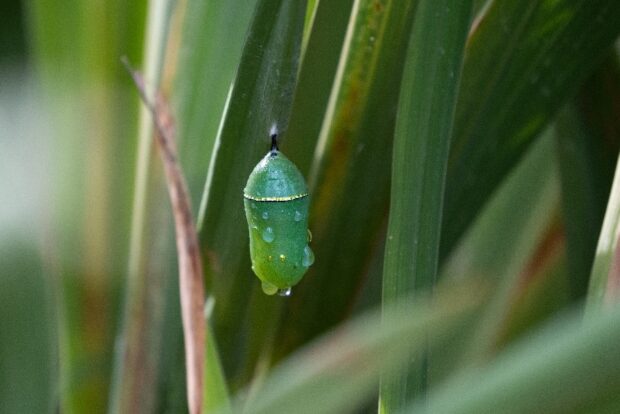
The White River flows through Indianapolis, serving as a migration corridor during spring and fall for waterfowl, songbirds, and other wildlife. Monarch populations breed in Indiana over the summer before traveling thousands of miles to Mexico for the winter season. Since so much of Indiana’s native prairie has been developed, wildlife gardeners increasingly include prairie habitat plants, such as monarch host plant, common milkweed (Asclepias syriaca), and nectar plants like Prairie Blazing Star (Liatris pycnostachya), Smooth Blue Asters (Symphyotrichum laeve), and Prairie Sundrops (Oenothera pilosella) to support 3 seasons of bloom for pollinators.
Indiana is home to 8,000 Certified Wildlife Habitats® statewide, supported by Indiana Wildlife Federation, which hosts native plant sales and workshops, and provides education on Indiana’s native plants and animals.
Notable Indianapolis Certified Wildlife Habitats® include:
- The Virginia B. Fairbanks Art & Nature Park at Newfields, offering site-specific contemporary art along a 35 acre lake and the largest native pollinator meadow in Indianapolis.
- White River Gardens at the Indianapolis Zoo – with sustainable practices and native plant gardens throughout its exhibits, this zoo is one of over 100 Certified Wildlife Habitat® zoos and aquarium gardens nationwide.
- The Indianapolis based headquarters of Wild Birds Unlimited demonstrates their commitment as a “Habitat Champion” partner with NWF, promoting thousands of certifications nationwide through its Save the Songbird campaign.
The city completed the Mayors’ Monarch Pledge in 2020 having committed to 10 actions to protect monarch butterflies. There are 5 additional Mayors’ Monarch Pledge communities throughout the greater Indianapolis area. Zionsville is an active suburb of Indianapolis, and was National Wildlife Federation’s 2nd Community Wildlife Habitat, which is still active 23 years later! Zionsville also took the Mayors’ Monarch Pledge in 2023 and pledged 14 actions.
#4 Seattle, Washington
Seattle’s location in the Puget Sound watershed is a rallying point to keep habitat healthy for both people and wildlife. Seattle residents generated 1,254 certifications as part of 6,565 certified metro-wide urban and suburban habitats, including 177 Schoolyard Habitats.
Wildlife habitats, and the watersheds they are a part of, are threatened by stormwater runoff and pollutants, but native plant root systems aid in ground water absorption, minimizing stormwater runoff. Residents, schools, places of worship, and businesses are making a difference by following sustainable gardening practices to reduce pollution, benefitting wildlife from salmon to swallowtail butterflies. Many birds also require native host plants to provide the thousands of insects they need to feed their young, like the Anna’s hummingbird, the only hummingbird to reside year-round in the Puget Sound.
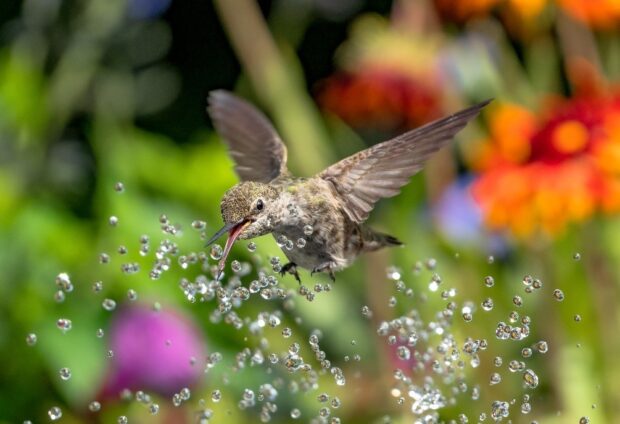
Washington State, which has 12,000 certified habitats, is home to over 40 actively engaged communities from Bellingham to Olympia – creating a wildlife corridor/flyway throughout the Puget Sound. In partnership with Taylor Morrison, over 11 communities incorporate native plants, with one community certifying 40 acres of open space of native oaks, including Oregon white oaks, a”keystone species” that supports up to 550 species of caterpillars, critical to the survival of many species of butterflies, birds and mammals.
With the help of AmeriCorps members, NWF’s Seattle-based regional office recruits have trained over 1,000 volunteers as habitat stewards that support local projects like education and outreach tabling and schoolyard habitat creation. Nearby Camano Island is an honorable mention as another high performing wildlife gardening city in Washington, with 1,041 Certified Wildlife Habitats.
Chihuly Garden and Glass and the Woodland Park Zoo are two notable Certified Wildlife Habitats in Seattle. The zoo’s The Living Northwest program helps people inhabiting urban, suburban, and rural areas better understand how to coexist safely and harmoniously with local wildlife.
Seattle’s annual Wildlife Week is co-hosted this year with Washington Department of Fish and Wildlife’s Habitat at Home program to inspire and recruit wildlife gardeners throughout Washington. Events and opportunities are from May 13-21, 2023.
#5 Atlanta, Georgia
Atlanta’s impressive 1,209 certifications help counteract increasing development and habitat decline across this growing metropolis. Dedicated volunteers at 6 Community Wildlife Habitats contributed to 7,614 certifications metro-wide, making greater impact possible. They include: Druid Hills, Chamblee, Roswell, Johns Creek, Alpharetta and Milton. There are approximately 11,000 Certified Wildlife Habitats across Georgia.
Also included are 433 Schoolyard Habitats, making Atlanta a leader in youth-led wildlife gardening with its networks of outdoor education programs like Earth Tomorrow, creating pollinator gardens throughout the state of Georgia. Many students and educators are part of NWF’s Schoolyard Habitats® program and historically were also engaged through a Schoolyard Habitat program run by the Georgia Wildlife Federation.
Atlanta is the largest populated city in the Piedmont ecoregion. By using native plants and sustainable practices to create a growing network of Certified Wildlife Habitats®, Atlanta gardeners help many of Georgia’s official state flora and fauna. Georgia’s state tree, the Live Oak (Quercus virginiana), is a keystone native plant supporting 400-500 native insects including many butterflies and moths, therefore providing essential food for birds including the Brown Thrasher songbird, the Georgia state bird. Sustainable native plant habitat supports other Georgia state symbols, like the American Green Tree Frog, the Tiger Swallowtail butterfly, and the state’s wildflower, native Azaleas.
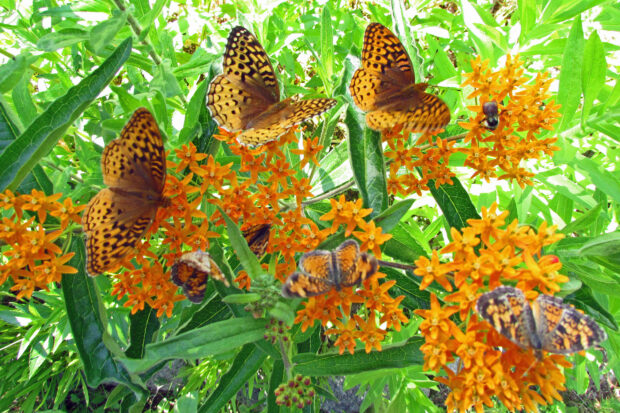
Atlantans have taken their commitment to garden for wildlife to the next level by becoming a Mayors’ Monarch Pledge city in 2021. Atlanta and the 9 other metro-wide communities that have taken the pledge are:
- Planting or maintaining a monarch and pollinator-friendly demonstration gardens in medians, public rights of way, or at prominent or culturally significant community locations.
- Converting vacant lots to monarch habitat.
Habitat certifications are supported by NWF partner Taylor Morrison, committed to enhancing biodiversity and restoring wildlife habitat by planting native plants and supporting monarchs across 42 communities.
The Atlanta Botanic Garden is a notable Certified Wildlife Habitat® as it grows many native plants of the southeast to educate the public on the importance of planting and preserving them.
Help celebrate the 50th Anniversary of Garden for Wildlife and certify your garden!
To learn about plants native to their region, gardeners can utilize the National Wildlife Federation’s Native Plant Finder and Keystone Plants by ecoregion created in partnership with Doug Tallamy, whose work has helped catalyze a growing native plant movement. For resources by state, you can view National Wildlife Federation’s network of state affiliates active in Garden for Wildlife or utilize the Garden for Wildlife, Inc. collections of native plants shipped to consumers in 38 states.
Learn more about National Wildlife Federation’s Community Wildlife Habitat program at NWF.org/Community, the Mayors’ Monarch Pledge at NWF.org/MayorsMonarchPledge, and the Schoolyard Habitats® program at https://www.nwf.org/Eco-Schools-USA/Resources and NWF.org/Schoolyard and visit our Media Center at NWF.org/News.



















